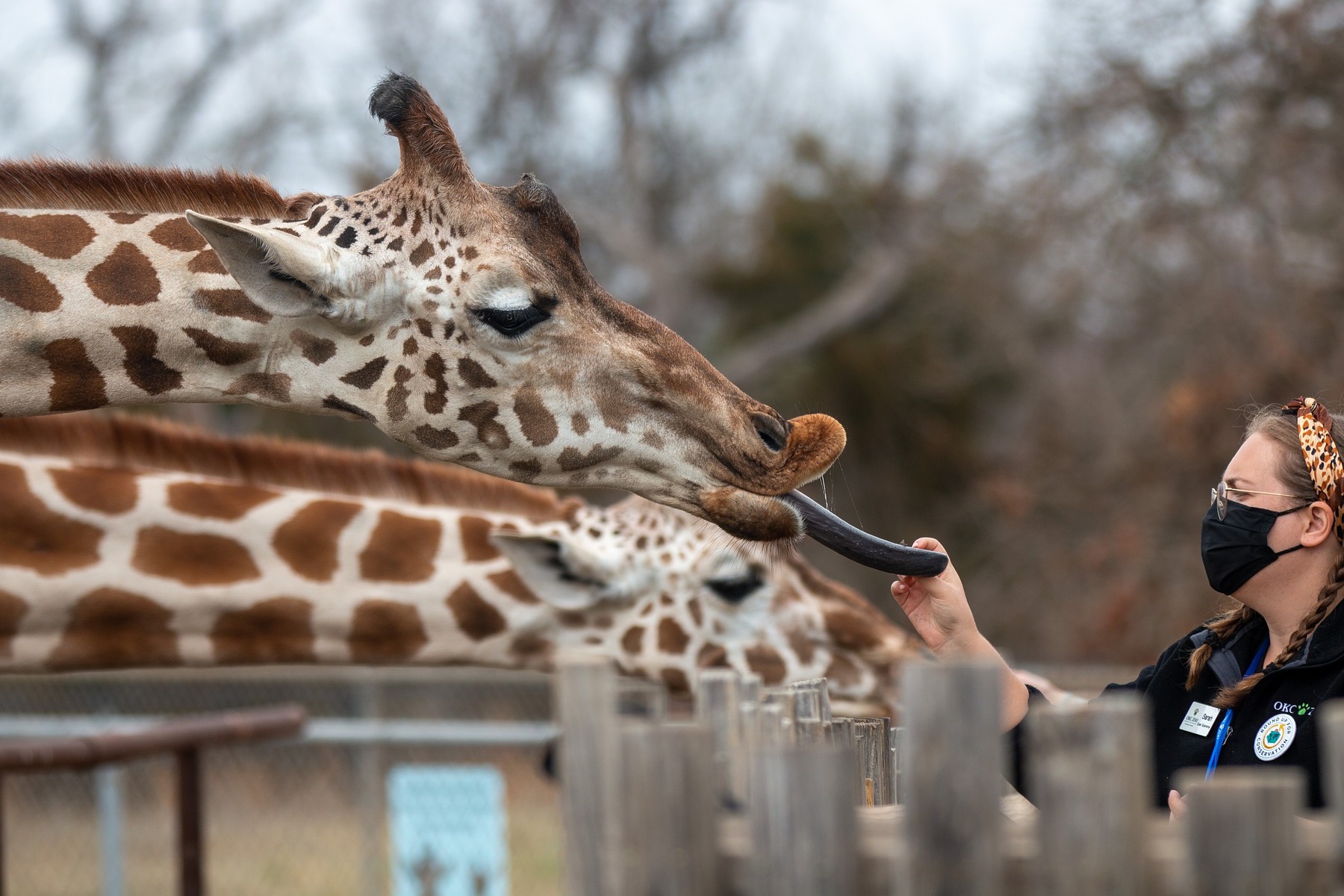As a child, a trip to the zoo felt like a safari adventure filled with thrills and excitement. The joy of seeing an ocean of pink as a massive flock of flamingos scurry across a shallow pool, and the sensation of locking eyes with a predator and having nothing but glass between you and their sharp teeth are incomparable. The delight that feeding a school of fish as they dance around in the water and watching a baby gazelle run laps around its mother brings makes it no surprise that many children dream of becoming zookeepers. But is the job of a zookeeper as good as it seems? The best person to answer that question is, of course, a zookeeper.
Senior Zookeeper Stephanie Chavez
Stephanie Chavez is a senior zookeeper with five years of experience working in various animal departments. She currently works in the education department at a zoo in El Paso, Texas. Chavez took the time to answer my questions regarding the daily work of a zookeeper. When I asked Chavez how she compares the reality of zookeeping to the childhood fantasy, she replied, “It’s all you think it would be, except there’s a lot more poop.”
The following information and insider intelligence reflect what I learned during my interview with Chavez.
Husbandry
A zookeeper has numerous responsibilities, the key one being animal husbandry: the management and care of animals, including regulating water, food, environment and breeding. The schedule of tasks varies depending on the type of animals in the keepers’ care, but the first thing all keepers must do is get a headcount of all their designated animals to make sure everyone is safe. Keepers provide clean water daily and dispense food according to each animal’s strict feeding schedule and diet.
Extensive cleaning occurs in the morning before guests arrive at the zoo. Keepers must maintain clean guest areas around exhibits and within the exhibits themselves. Zookeepers must also care for any plants inside animal enclosures, including watering, weeding, trimming and replanting as necessary when plants die. Keepers must research plants before adding them to an exhibit to ensure they are safe for the animals living in the enclosures. The dirtiest part of the job is removing all the feces from the animal enclosures.
As the zookeeper goes about their day cleaning, they must closely observe their animals’ behaviors. Zookeepers watch for signs of stress, aggression, pain, injury and breeding. It is critical that the keeper recognizes these signs to ensure the safety of the animals.
Enrichment
Like people, animals require mental stimulation to improve their quality of life. For animals, it’s called enrichment. Enrichment comes in many forms and depends on what’s safe for the species and amusing to the specific animal. Enrichment includes foods, cardboard boxes, barrels, chew toys, bubbles, nesting material, etc. Zoo animals require new enrichment daily, and keepers need to clear out any old enrichment.
Enrichment varies from positive to negative depending on the animals’ response, and enrichment can go inside or outside an exhibit. Even negative responses from enrichment serve as positive enrichment since it still creates mental stimulation for the animal.
Zookeeper and Animal Training
Another essential job of a zookeeper is conditioning and training the animals. Like domestic animals, zoo animals must receive regular vet visits, shots and medications. As part of a zookeeper’s duties, they must make time to teach certain animals to accept prescriptions, undergo injections, have their wings checked and press against the side of their enclosure so that veterinarians can perform specific procedures and administer medications.
Zookeepers must go through preparation before they can train an animal. Once they choose an animal to instruct, they must create a training plan and get it approved by their supervisor. The training plan must include the purpose of the training, the behavior the animal will learn, the reward item and the bridge. The best way to engage an animal in the training practice is to reward them with their favorite, high-reward treat. The trainer then provides a bridge, or signal, to inform the animal that they completed a job successfully. After the bridge, the trainer must immediately reward the animal.
Education
Zookeepers are also responsible for educating zoo visitors on information and facts about the animals in their care. Guests may ask questions while zookeepers work, so they need to research to fulfill their education duties properly. Depending on the zoo, many keepers host scheduled presentations either daily or weekly where they stand in front of an audience and talk about their animals for 15 to 30 minutes.
On top of educating visitors on their animals, zookeepers need to know about the zoo’s rehabilitation and animal welfare programs. Many zookeepers also participate in these programs, which include breeding endangered species, rehabilitating injured wildlife and releasing injured animals back into the wild.
Medical
Keepers also experience difficulties assisting vets with various procedures when vets come to an animal’s exhibit or when keepers must take an animal over to the on-site vet clinic. Zookeepers are more knowledgeable than vets on properly holding animals to reduce injury to both the animals and the staff, so ensuring proper handling and shipping during a procedure becomes a zookeeper’s primary task. Zookeepers also have the heartbreaking job of assisting with euthanasia by escorting the animal to the vet and assisting with the accurate handling of the animal during the process.
Paperwork
Most of the day, zookeepers are on their feet carrying out their many physically demanding tasks. Still, every zookeeper fills out their fair share of paperwork at the end of the day because all zoo jobs require accurate and detailed documentation to ensure proper animal management. Efficient written and verbal communication can mean the difference between life or death for the animals.
Zookeepers must keep records of daily tasks, special projects, any signs of odd or unusual behavior, medication and medical procedures, breeding behaviors, acquisitions, dispositions, training procedures, enrichment and reactions to enrichment. Zookeepers must also communicate with their team members and leads to ensure everyone is up to date with the goings-on in each exhibit.
A day in the life of a zookeeper is highly demanding. They have numerous tasks to fulfill each day and little time to complete them. But zookeepers love their jobs and the animals in their care. It is a gratifying profession that offers the opportunity to interact and care for many beautiful animals from across the world. They may even possibly play a role in recovering an endangered species.

















